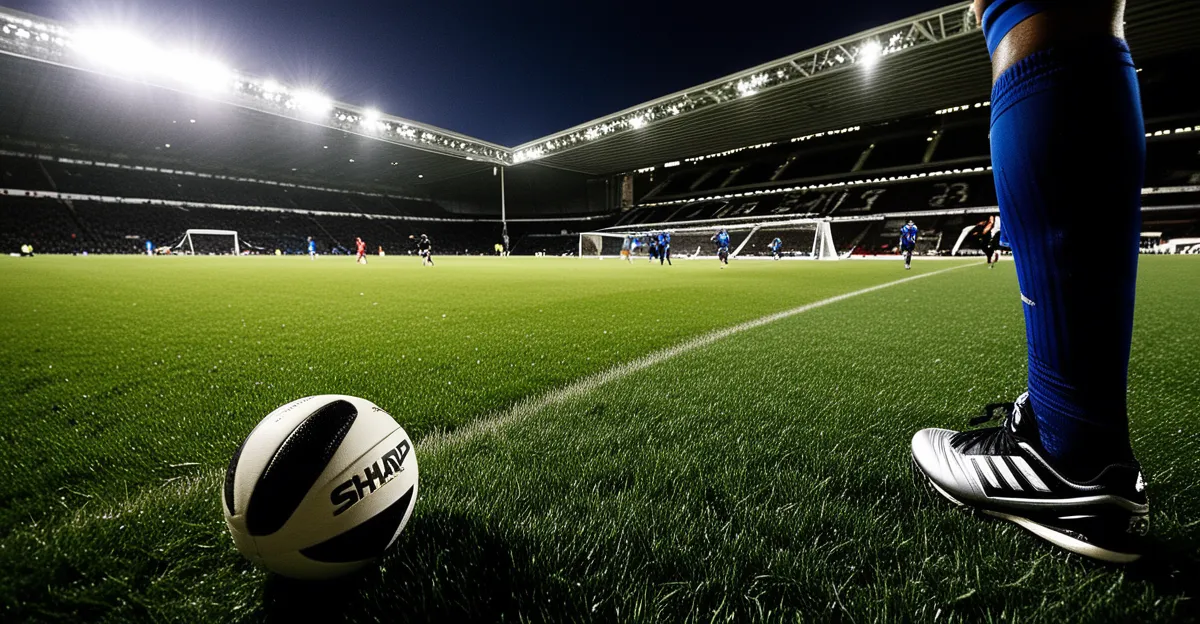Key Trends Transforming the UK Sports Landscape (2014–2024)
Over the past decade, UK sports trends have been marked by significant evolution, reflecting broader societal changes and shifting interests. One key trend is the growth in sports participation, with more individuals engaging in diverse activities beyond traditional disciplines. This expansion emphasizes not only classic sports like football and rugby but a notable rise in emerging areas such as cycling, gymnastics, and esports.
Simultaneously, there has been a clear shift in sports popularity. While some traditional sports retain strong followings, newer or previously niche activities are gaining momentum, driven by younger demographics and greater media exposure. These sports evolution patterns reflect a decade-long analysis showing how preferences adapt over time.
In parallel : What Future Challenges Do UK Sports Face?
Policy and organisational changes have also played a crucial role. Sporting bodies and government initiatives have introduced reforms to promote inclusivity and funding distribution, shaping the landscape substantially. For example, investment in grassroots programmes and support for underrepresented groups have altered the sports framework, encouraging broader community engagement. These multifaceted developments collectively define the vibrant state of UK sports from 2014 to 2024.
Rise and Fall of Popular Sports
The landscape of UK popular sports has undergone notable shifts during this decade, driven by shifting interests and evolving demographics. Traditional strongholds like football and cricket, while still holding considerable sway, have experienced some plateauing or modest declines in sport participation rates. This change aligns with younger generations exploring alternative activities such as esports, paddle tennis, and cycling, which better reflect urban lifestyles and digital engagement.
In parallel : How do grassroots sports initiatives benefit local communities in the UK?
A key question: Why have some traditional sports seen declines? The answer lies partly in changing leisure habits and media consumption, where digital platforms have introduced audiences to less conventional sports. In addition, regional variations play a role; for example, rugby remains highly popular in certain UK areas, while basketball gains traction in others due to localized community programmes.
Overall, UK popular sports today reflect a balance between established games and emergent sectors. This dynamic illustrates a broader sports evolution where participation rates fluctuate in response to cultural trends, accessibility, and media influence—factors that collectively shape the future of sports in the UK.
Investments and Funding Shaping UK Sports
Strategic sports investment UK has been pivotal in transforming the landscape over the past decade. Both public funding and private contributions have expanded, targeting grassroots development alongside elite performance pathways. Government support has prioritised increasing access to facilities and coaching, which strengthens community involvement and nurtures emerging talent.
How has financial backing impacted UK sports infrastructure? The influx of funds has enabled modernised training centres, advanced equipment, and enhanced competition opportunities. This not only raises athlete standards but also fosters broader participation. Sponsorship deals and broadcasting revenue play critical roles by injecting resources that sustain sports bodies and amplify visibility, creating a virtuous circle of growth.
Such investments directly influence athlete success. Well-funded programmes mean better medical care, nutrition, and analytics—elements essential for peak performance. Furthermore, improved infrastructure benefits local clubs and schools, encouraging lifelong engagement in sport.
Overall, the expanded sports investment UK reflects a deliberate, coordinated effort. Through targeted funding and government support, the UK has bolstered its sports system’s foundation, enabling sustained progress and elevating its international competitive edge.
Media Coverage and Digital Transformation
The last decade has witnessed a profound shift in sports media UK, moving decisively from traditional broadcasting to digital platforms and streaming services. This transition offers unprecedented accessibility, allowing fans to watch diverse sports at their convenience. How has this influenced fan engagement? Digital platforms enable real-time interaction, personalized content, and instant updates, revolutionizing the way audiences follow sports.
Social media’s rise plays a pivotal role in athlete branding and fan connection. Athletes use platforms like Twitter and Instagram to build their profiles, engage supporters, and promote their sports outside conventional media channels. This dynamic fosters stronger fan loyalty and broader visibility.
Moreover, digital transformation has enhanced coverage of women’s and minority sports. Historically underrepresented, these areas now benefit from increased exposure and dedicated programming, encouraging participation and sponsorship. Broadcasting changes have made sports more inclusive and diverse in representation.
Overall, the evolution in sports media UK demonstrates how digital innovation reshapes both consumption and promotion. These changes support a more connected, interactive, and accessible sports culture, strengthening the overall appeal and growth of UK sports in the modern age.
Inclusivity and Representation in UK Sport
Inclusivity in UK sport has seen considerable progress from 2014 to 2024, driven by a focused commitment to sports inclusivity UK and gender equality in sport. Government policies and sports organisations have championed women’s participation through funding and high-profile campaigns, directly increasing visibility and competitive opportunities in traditionally male-dominated sports. This support reflects a broader societal push for diversity and fairness.
Disability sport inclusion has advanced notably, with programmes designed to improve access, training, and competition pathways. Despite progress, challenges remain, especially regarding consistent funding and widespread awareness. However, the introduction of adapted facilities and specialised coaching is fostering greater engagement.
Efforts to improve minority representation within grassroots and elite levels also illustrate a changing landscape. Initiatives emphasising cultural sensitivity and removing barriers enable wider community involvement, enriching the sports evolution seen throughout the decade.
Together, these strides in sports inclusivity UK help create a more balanced and representative sporting environment. This inclusive approach not only supports participation growth but also strengthens the social and cultural fabric of UK sport.
Technology Redefining Performance and Experience
In the past decade, sports technology UK has radically transformed both athlete performance and fan engagement. The integration of performance analytics and wearables has enabled precise monitoring of training loads, injury risks, and recovery times, allowing coaches and athletes to optimise preparation. Sports science advances contribute deeper insights into biomechanics and nutrition, elevating athlete standards.
Technological tools like VAR and Hawk-Eye have improved refereeing accuracy and fairness in football, tennis, and other sports. These systems reduce human error, increasing trust in match outcomes and enhancing the spectator experience. Fans now receive clearer, real-time decisions, shaping a more interactive and transparent viewing environment.
Additionally, digital innovations enrich the fan experience. Virtual reality (VR) and interactive apps offer immersive ways to watch games, explore statistics, and connect with athletes. These platforms foster engagement beyond the stadium by providing personalised content and social interaction.
Overall, the fusion of tech advancements and analytics is driving a dynamic sports evolution in the UK. As these technologies continue advancing, they promise even greater improvements in performance quality and fan involvement, setting new standards for the sporting landscape.






